#Reality is Strange; Three Meat Aesthetic
Text
Summer Aesthetics
Gyro
Road trips, beach days, sprawling out in a hammock. The smell of cut grass. Windows and doors cracked to let the air in. Popsicles and watermelon slices and neighborhood cookouts. Fireworks in the park. Back to school sales. Americana.
Starchy
Hot, dusty roads. Running barefoot in the fields. Fireflies drifting lazily by as the moon rises. Cutting out of work early to enjoy the sunshine. Festivals and carnivals and county fairs. Anticipation of the upcoming harvest.
Sawyer
Hazy, muggy afternoons. Loitering with your friends. Gas station treats. Arcades. Underpasses. Music festivals. Riding your bike to the pond. Stargazing from the roof of your car. Wishing you still got summer vacations.
Three Meat
Blazing sun, burning sands, vast mesas and plateaus. The contrarian chill of the desert night. Tropical forests and coasts. Teeming life. Busy markets-- dangerous markets. Nightlife. Feeling the pulse of the universe as it thrives around you.
Gourdon
Oppressive humidity. Buzzing insects. Sunshowers. Traveling circuses. Days stretching on and on, feeling sometimes limitless, sometimes tedious. Bubbles drifting on the wind. Creatures lurking deep in the ocean. The promise of adventure... for better or for worse.
#Soup to Go; Queue#yeah idk what came over me but I had to write this all out#uhhhh new dash game I guess what are your muse(s)'s summer aesthetics?#A Full Pot; Everybody#A Dash of This; Dash Games#Organized Chaos; Gyro Aesthetic#Fractured Fairytales; Starchy Aesthetic#Down in the Underground; Sawyer Aesthetic#Reality is Strange; Three Meat Aesthetic#Lethal Whimsy; Gourdon Aesthetic
1 note
·
View note
Text
Character Design and Script Writing - Cyberpunk 2077 Case Study - 29/12/2020
For today’s research for both projects, I wanted to make a case study for a game I feel very much influenced by in terms for the aesthetics and designs for the Character Design project as well as the background atmosphere and visualization for the script towards the script-writing essay. I was fortunate enough to be provided a copy of the game to play it to experience what it’s like to explore these areas as well as well as having a book looking at the extensive lore that the game provides as well as artwork from the game.

From playing the game, your offered a series of roles that you can start yourself choosing from Nomad, Street Kid and Corporative roles. Each of these roles allow the story to be taken in different places making the game very personal to how you want to live if you were living in this world yourself. I myself went with the Nomad route and one instance I had that really struck me was when you first enter into ‘Night City’ for the first time. As you cross the border, you halt at a traffic stop within the city to watch a group of people robbing a shop for money. The group tries to escape and enter in the car but the city’s police comes flying in from above and immediately grapple down onto the city floor and fire without hesitation at the crooks. It leads to an intense bloodbath of the crooks and all you can do is just watch all the action happen in front of your car having front row seat to it all. Both you and your companion are devoid of all emotion not from the trauma of it, but this gruesome human onslaught doesn't seem to phase them one bit. In fact, nobody in the city is phased by it at all.
Instances like these help establish what kind of world you’ve just entered as it’s presented as a kill or be killed setting. This works perfectly for the kind of idea I want to cover for the script-writing portion of the project as it’s not just the tone I want to loosely base this off from, but characters reactions to horrific acts and how it doesn't bat an eye to them showing how de-sensitised they are with it. This to me makes it feel like the city is transforming people’s mindsets to think the world is always meant to be like this giving no people hope to ever explore or Challenger themselves having seen what happens if you rebel or stand out.
I think adding onto that, the trailer of Cyberpunk 2077 when it launched on the 10th of December helps to back this up. Whilst the game itself is very action heavy, dark and bloody, the trailer really emphasis and represents what kind of game your in store for. Specifically, it’s all about people, family and the connections you make in the world promoting the RPG mechanics of the game as there’s real people living through all of this madness which is where you the player are there to dwell and experience those stories being told to you.
This is help emphaised in the trailer by how little the protagonist fights at all being replaced with close up shots of people’s faces and showing their raw emotions to events that happen in the game like body language of hugging each other further pushing that sense of family and connection. All these moments are harmonised together with the music of the trailer which really brings the connection across. I think this is because it’s not very traditional to have soft sounding and emotional music for a violet game as many people could disregard it because it’s different. But the music plays to the trailer’s strengths from how delicate people’s lives are here with long stares on people’s faces and two people having dinner outside. These little bit of human interaction makes us feel more for the content we are watching.
Looking at the trailer in a more character design approach, faces were the big draw for me specifically between the Maelstorm and the human’s faces. The human faces have this really interesting line design on their face where LED stripes shine out of their face. They look modified and give off a artificial wrinkle vibe to them helping to deliver that cyberpunk look to them. Although in strange way to me, it makes them look a lot sadder whenever they have a natural face with no emotion on them. This detail to me feels it flows nicely with where I want to take my story in the script-writing process as people often get cybernetic augmentations to make themselves feel better similar to plastic surgery. That’s not to say there isn’t good cybernetics but in this world of mine, cybernetics are mostly seen of a way of fitting into the city and losing part of your character which is what my Hyde character is so opposed to.
Cyberpunk 2077 — Official Launch Trailer — V
youtube
In addition to playing the game, I also received the book looking at the lore of the game and background information. Reading through, it thoroughly details a lot of how the world works like how even the littlest of things influence how the world ticks presenting a really thorough case on it’s world-building which gives me great inspiration to how I might approach it. There was one thing that stood out to me in the book which was to do with these special devices called ‘Braindancers’ which serve as really advanced virtual reality headsets and specifically how they mention it’s usage of celebrities as people can get too attached to the devices praising celebrities through it like they’re part of their lives and losing their identity because of it. This reminded me from a scene from Ghost in the Shell (1997) film where a garbage man loses all his memories from his mind being hacked leaving him completely hollow inside with no memories attached to him. I feel both of these instances I want to get across in the script-writing from maybe the dangers of idolising and retaining your character.
Book

After reading the book, I thought I explore the game and take screenshots of areas that I found to be interesting for the script-writing process mainly areas like the slums and the city as those were my favorite to experience from how much they contrast from each other. What’s really nice with the game is that it has a built in photo mode where you can pause the game and screenshot a specific section of the world which you can then filter it to your hearts content.
The first image is one of the first slum looking environments that you find in a quest. Personally, I love the darkness that engulfs the scene here with only the lighting of the dim blue light and lanterns struggles to beat the darkness. Not to mention the smoke coming from the ground really helps to add character by all the gasses and smoke being stored and cramped in the smaller parts of the city whilst the outer city looks all glamorous.
Speaking of the city, this is a screenshot I took from the city center which is filled to the brim with architecture although strangely, not as much lighting as I would of thought would be put in here. Therese bright neon lights on the higher decks of the city sure but down below, it looks a lot darker and forgotten about in comparison. This look is something I definitely want to express in the script as it acts symbolic to the false persona that the city gives off compared to what we see on the outside.


Going back to character design, three different characters stood out to me when I was playing the game those being: Crusher, the Malestorm Gang and Johnny Silverhand.
Crusher is this large mechanical figure that serves as a threatening bodyguard to anybody that is unfortunate to step in it’s way. Looking at him characterful, I really love the denseness of the character as he looks like this unstoppable moving force that forces itself into conflict with thinking it over. He reminds me of my Hyde character a lot not just from personality, but also the sheer bulkiness that he imposes to us. To me, this how I would want my Hyde character to be built up thick and dense when it comes to modelling him,
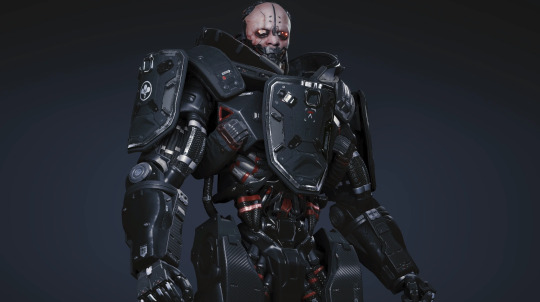
Having already discovered the Malestorm gang before earlier on in my research, what I found interesting about them in playing the game were their arms specifically the pipping that goes into them to create this cross between industrial and cybernetic arm. Whilst this is an easy comparison to make to my Hyde character as the arm is quite bulky, I would say it more perfectly suits my Jekyll character more from how human sized it is despite looking so mechanical if we were to compare this a sleek cyborg arm like Johnny Silverhand’s bionic arm.
In addition to the arms of these characters, the eyes are such a huge part of the aesthetic I really enjoy from them with their use of shapes and neon lights lighting up the scenery wherever they go. The lore behind the design is that if you want to join the gang, you have to get your eyes gouged out and replaced with these artificial eyes instead which is really creepy but fascinating to me. I think terms of the Jekyll character, the eyes seemed to be a better fit for my Hyde character giving the him a more menacing and threatening aura to him.


Only Malestorm Eyes
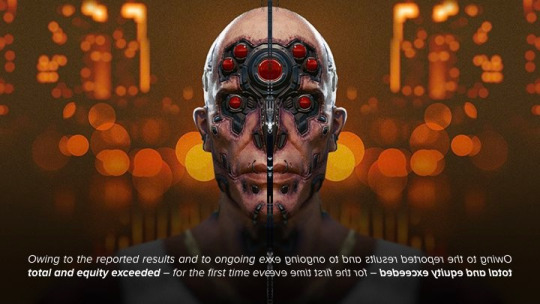
And lastly, one other character I felt inspired by was ‘Johnny Silverhand’ your companion in the game. His bionic arm is what sticks out to me the most as it has a very sleek and well rounded design like it was designed for a human. I can imagine for the Jekyll character that i could combine aspects of the Maelstorm gangs arms with the one that Johnny possess to form a very chunky top but gradually becomes a lot thinner as the arm goes down.
Back to the character itself, there are two design aspects I like being the muscular structure and the consideration for re topology on Johnny’s bionic arm. The overall muscular structure is how i slightly imagine Jekyll’s body to be as well built. But maybe I might consider less muscular meat on his body due to him not as exercising as much to an average human. I raised the question of retopology to how the arm acts on a ball and socket set up for the arm to flex which I thought was quite interesting to see as I wonder if that was considered first before making the character.
Sketches of Johnny Silverhand before Keanu Reeves came onto the game
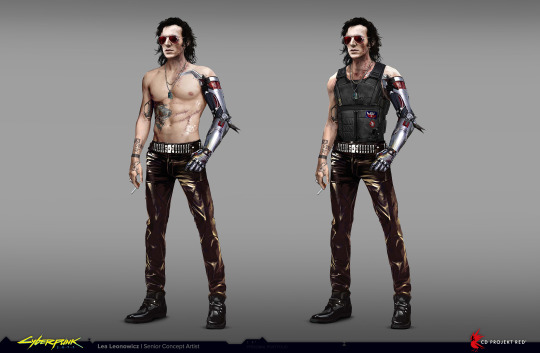
I think from look at all of these character designs, I have good ideas for what I would like to do to my models from the rough sketches I have of them already. I feel the idea of Johnny and the Maelstorm gang’s arm being fused together is an idea I want to hold onto despite thinking my Hyde character as inspiration for the mdoel. Overall, the research on character design on ‘Cyberpunk 2077′ has been invaluable due to having so many of the elements and ideas I want to cover being found here in this game.
1 note
·
View note
Text
The Real Story Behind The Babadook (2014), And 17 Weirdest Bogeymen From Around The World That Might Be Hiding Under Your Bed Right Now
Strange times we live in.
It’s a Saturday night, and I’m hauled up at home eating a vegetarian lasagne whilst my mother asks me for the 37th time why I’ve decided to give up meat, when really, if there was no global pandemic, I’d be hauled up at home eating a vegetarian lasagne whilst my mother asks me for the 37th time why I’ve decided to give up meat.
It really is a strange time we live in.
But, in my attempt to protect the vulnerable groups in society and halt the spread of the latest Twitter hashtag in its tracks, I decided to catch up on the horror films hadn’t found the time to press play on just yet.
So, a bucket of popcorn and some mild trauma later, I could finally join in the conversation about The Babadook.
6 years too late.
Nevertheless! Once I’d emotionally recovered, I finally had my Sex And The City moment. No, not the ones with feminism that would make Emilline Pankhurst perform the equivalent of a Viennese Waltz in her grave - the one where Carrie sits in her NYC apartment and thinks about men at her computer.
“I couldn’t help but wonder: could the Babadook be based on a true story? ”

Unfortunately, I discovered that the Babadook is based on the concept of the boogeyman, an urban legend that has a greater global reach than Covid-19.
So, to distract you from the global pandemic with the threat of a creature lurking under your bed and waiting to snatch an ankle, I thought I’d let you in on the reality behind this queer icon.
First, let’s talk ‘bout The Babadook.
It was one of the biggest hits of the 2010s, combining the classic trope of creepy children with the classic colour palette of depression. Our story follows a single mother and her son who begins to be visited by an imaginary creature fresh from the pages of a children’s book.
With spiky talon-like hands, a cloaked figure, a jaw crammed full of teeth, a face paler than that time you bought that foundation on a whim in TK Maxx - all crowned with a dusty hat - the Babadook the child was seeing certainly had a sense of style.
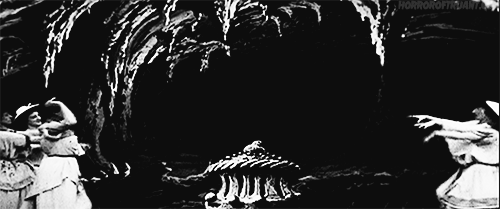
The child, Sam, begins to create intricate traps and weapons designed to stop the Babadook, all the while the book predicts the mother’s rather dark future. It becomes clear that the Bababook is preying on the mother and essentially possessing her, a diagnosis that is confirmed when the mother attempts to kill Sam.
She then regurgitates a black inky substance evocative of ectoplasm, and is released from its grip.
The film ends on the happy family feeding the Babadook as it lives in their basement.
This indie horror - once it had finished polishing the 5 awards on it’s mantelpiece - might have woven a intricate plot deviating from the simple basis of international man of mystery James Bond The Boogeyman, but the basis still sticks out more than that wardrobe in the corner of your bedroom you’re now highly conscious of.
Simply put, the Babadook matches the basic concept of the boogeyman:
There’s some weird, dark creature that knicks kids and eats ‘em if they wander alone or don’t go to bed or misbehave. Just like Krampus, the bogeyman is a legend propagated by parents to convince kids to stay in line.
That being said, the mythical creature isn’t the only inspo behind this cinema-hit.
Specifically, the brains behind the film, Jennifer Kent, claimed it was about a deep-rooted fear we all have: that of going mad. On top of this, it seeks to show parenting from a real perspective.
The film focuses on a single mother as she faces one of the most difficult challenges in life: she loses her husband whilst going to give birth to her son, and then has to raise him alone. But that is not all.
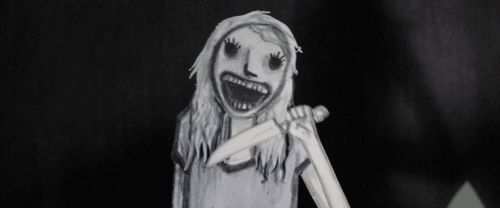
Kent also spoke of a real encounter with the bogeyman.
Basics, her bestie’s son was being plagued by an imaginary monster, so she pretended to talk to it to calm his concerns. Sure, this tale might not have kickstarted the real terror engaged with in this movie, but it invited us into the reality behind the bogeyman.
But beyond this, the movie also detracts from the Babadook, and instead looks for the primal instincts in the mother - it looks for the bogeyman within us all.
That’s right - the real horror that was inside us all along.
Yawn.
But the thing is, it also brings up hell of a lot of paranormal activity that is remarkably accurate to theories of the supernatural.
Let’s start with the introduction of the Babadook.
He arrives in the form of a creepy children’s book no one’s seen or heard of. Armed with a chilling nursery rhyme and an aesthetic last seen in 2007, the Babadook follows the basic principles of a basic haunting: ghost does spooky stuff, ghost spooks humans, humans invite it in following the consent laws of the universe by interacting with it, ghost spooky powers intensify.
This begins with the book itself. Although the film doesn’t consider if he is a paranormal being aligning with the concept of demons and spirits (etc.), this book follows the concept of haunted objects.
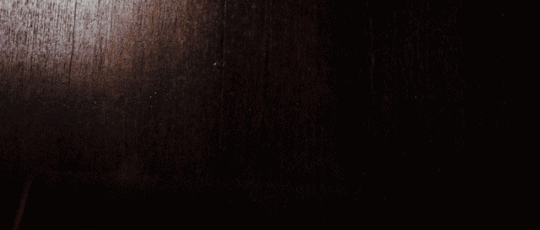
By opening the book and reading it - or, interacting with it - they invite in the Babadook. And when she tries to destroy it, it crops up again, fully intact and conveniently lying on her doorstep.
No ‘sorry we missed you card’ needed.
This closely follows the theory of the haunted object, something more on-trend than tutting at empty shelves in the grocery store. Haunted objects have a habit of failing to be destroyed, and by engaging with them, such as not asking permission for taking a picture of a haunted doll, you enter communication with them.
From there, you’ve basically consented to a full possession. The object is a vessel for a spirit or a demon until a new, better, breathing vessel can be found.
You can find out more about this here.
I can’t find anything about haunted books specifically online, but as a variety of haunted objects exist, from bunk beds to boxes, I’m sure there’s potential for it.
Next is the eventual possession of the mother.
One of the most dramatic moments we witness is when the mother coughs up this black bile which represents the removal of the Babadook. This bears a striking resemblance to ectoplasm, a white liquid often released by those experiencing intense paranormal activity.
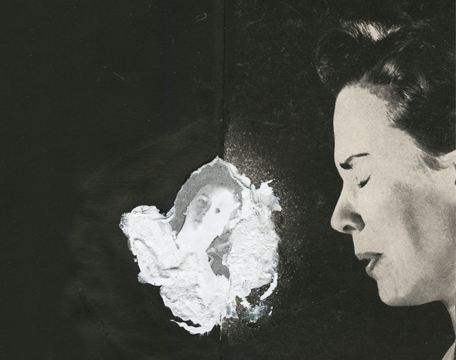
When mediums experience a trance-like state, they supposedly release a fabric-like or thick substance that darkens as physic energy is intensified. It allows those in the supernatural realm to interact with the physical realm, and for spirits to represent themselves to the audience of a seance.
This film was one of the first to explore the potential paranormal explanations behind the bogeyman, and give some basis to a beast that has haunted communities since the beginning of time.
Speaking of the beast…
Who is the bogeyman?
It’s sometime in the 1500s.
We are in the middle of a small country called England, struggling to make ends meet between the near constant famine, the anxiety of being cursed by a witch, or some war with [insert european nation that may or may not exist anymore].
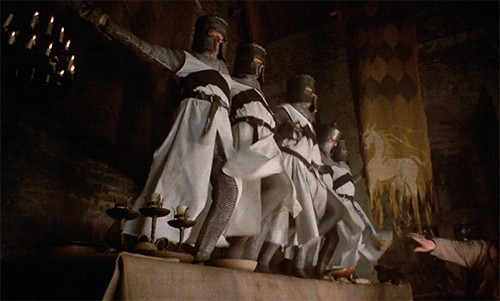
Either way, when we aren’t trying to spell everything with an ‘e’ at the end, we are being taunted by hobgoblins.
These pesky beasts made their name in tormenting Englishmen, playing pranks on them or simply just being foul.
Hobgoblins are the OG bogeymen, or are the first we can trace back to recorded sources. But they were no means the last. And they were by no means the only ones in the world.
As a simple definition, the bogeyman is a mythical creature that makes sure kids are staying in line, and was made up by parents. The thing is, the bogeyman features in every culture that has ever been created.
And given the realm of the paranormal explored so far on this blog, perhaps your local Babadook isn’t so out of the question.

The bogeyman has always claimed a rather vague existence, representing a non-specific terror that has even extended to just ‘being the devil’ in some cases. The origins of the name are no different: ‘bogge’ comes from middle english, meaning ‘something frightening’ or ‘scarecrow’.
It has even been interpreted to mean ‘goat’ which can be traced to relations to the devil.
Appearance wise, the bogeyman has several broad features that stretch across cultures. Standard features include sharp teeth, talon or claw-like hands, hooves for feet, and even bug-like features. The Babadook might have shared in a few of these #basic-bogeyman traits, but it’s not all about looks.
How does his personality fair?
The bogeyman can pick between three personality types: something that punishes misbehaving children; one that is just violent for the hell of it which includes stealing kids, and eating them and/or taking them back to hell; or one that protects the innocent.
“So what you’re saying is, this is a vague looking creature with a vague personality with vague ambitions that is made up by parents who are tired of their kids interrupting their vague post-marital sex?”
Okay, fine, the bogeyman bears little resemblance to the basic concept of the bogeyman. But this is what makes him the international man of mystery. It’s the regional divergences between each nation’s own Babadook that makes this creature quite so peculiar.
You see, I assumed the bogeyman would be a universal concept draped in more black clothes than a kid that was in the throes of that scene where Edward leaves Bella.
Turns out that there’s actually a band of bogeymen which can be specified by their not-so-casual racism and genitalia.

But as the 195 countries dotted across the globe have fostered their own child-eating monster, I thought I’d cut to the chase and fill you in on the world’s weirdest bogeymen.
*Rolls up sleeves of Team Edward hoodie*
The Sack Man
Making his cinematic debut in The Nightmare Before Christmas, the Sack Man is the international symbol for the bogeyman. Whether he himself is draped in sack-like materials, or is lugging one around with him, Hombre Del Saco uses his luggage to capture and carry naughty children away to, uh, somewhere.
Most popular in Latin countries and Eastern Europe, the Sack Man is the most well travelled bogeyman on this list.
Babaroga
The original inspiration behind the Babadook - note the similar name - Babaroga is a resident of Serbia and its neighbouring countries. However, the mood board for the Babadook’s inspiration stopped there.
Babaroga literally translates to “old woman with horns”.
And this pensioner spends her time finding children, putting them in a sack (how original), bringing them to her cave, and eating them. Or, to shake things up, she pulls childrens through small holes in the ceiling.

El Coco
When he’s not featuring in lovable Disney hits, El Coco is snatching kids that don’t get to sleep when they should. With nursery rhymes detailing the legend - a chilling similarity to the Babadook - spanish-language countries across the globe are versed in reportedly seeing a coconut-like face hiding under their beds.
With a brown hairy face and body, and glowing red eyes to match, this famous humanoid might be closer than you think.
“Que viene el Coco y te comerá”
- A line from the traditional Spanish nursery rhyme.
The Mamma
Pakistan gets its fair share of attention on the news cycle, but aside from the war going on, no one has ever noted the rather peculiar beast haunting the nation’s young women.
The Mamma isn’t the mothering being the name suggests, but is a large ape that lives in the mountains and only comes to the civilised world when in need of a young girl. Once he’s kidnapped ‘em and taken ‘em back to his cave, he licks their hands and feet so they can’t escape.
I have a strong feeling that what happens next to these innocent women isn’t as silly as someone licking your feet.
La Tulievieja
Bringing together the award-winning aesthetic of The Ring and the naseau-inducing aesthetic of Cats, La Tulievieja is Panama’s warning for naughty children. Legend has it she is a spirit cursed by God for drowning her child.
The thing is, God’s curse was, uh, confused. Her monstrous form consists of acne scarring, long hair, claws for hands, a cat’s body and a farmyard animal’s hooved feet. On top of that, she also looks like the child she drowned.
Yep, confused.
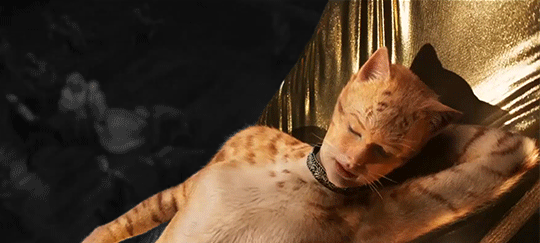
The Jersey Devil
Most countries suffer from multiple bogeymen - here in the UK, for example, we have 12 varieties - and America is no different. The Jersey Devil is actually one of 4 variants, and, like La Tulievieja, is also confused.
Fresh from the jaws of New Jersey, this beast has a horse’s head, bat wings, hooves, and a snake’s tail. First spotted in the 18th century and then again in 1909, it is believed that this legend was actually manufactured as a real estate hoax to coax residents into lowering their selling prices.
You might be able to deny the existence of this beast, but the Cipelahq (a large owl), the Long Black Being that makes a habit of slithering round like a snake, and Bloody Bones (a dancing skeleton and a separate skull) have yet to be disproven.
The Copperpenis Owl
Hungary has 3 different bogeyman, and most fit the description of the international beast: there’s one with a sack, there’s one which is just a-bit-beasty, and then there’s the giant owl with a penis made of copper.
I personally feel a Babadook with rose gold genitalia circa 2013 might have detracted from the overall feel of the film.

Ijiraq and the Qalupalik
Iniut communities also follow beliefs in the bogeyman, and probably focus on them more than others because if you wander off in the Arctic you will either get mauled by a bear and die, or freeze.
And then you’ll die.
They actually have 2 resident bogeymen. There’s the Ijiraq, a shapeshifter that kidnaps kids. You know, pretty basic bitch stuff. And then there’s the Qalupalik who is slightly more spooky.
This is a mermaid laden with green skin, long fingernails, and ratty hair that carry babies away in amauti (pouches or sacks for carrying kids) and bring them to live in their underwater world.
Butzemann
Remember when I mentioned that thing about casual racism? It’s a bit of grey area, ironically.
Germany’s very own bogeyman is known as The Black Man.
(You can see my point.)
That being said, this probably doesn’t actually refer to the colour of his skin as most Germans during the Middle Ages hadn’t actually seen anyone from the African continent. Instead, his outdated nickname was actually down to his preference for dark corners.
The closet, under the bed, in forests during the early hours... If it’s spooky, you’ll find him here.
Babau
Germany isn’t the only country with politically incorrect bogeyman. Italy has its very own Black Man, a mysterious figure which often features as a black man (gasp) or a black ghost. Only this entity has no legs.
The Marabbecca on the other hand is specific to Sicily, and mirrors the mythology of the Inuits.
Don’t play too close to the water, kids, or a Marabbecca will swim up and drag you to your watery grave!
The Kropeman
Our final iconic bogeyman isn’t like the other girls, even if his fellow Luxembourgian monsters are. There’s yet another Black Man, and there’s something about an uncle, but it's the Kropeman which has me sleeping with the lights on.
Under the streets of this small country roams a man with a long hook.
When he’s not busy dodging rats in the sewers, he’s grabbing kids by their nose via the hook, and dragging ‘em down into the storm drains.
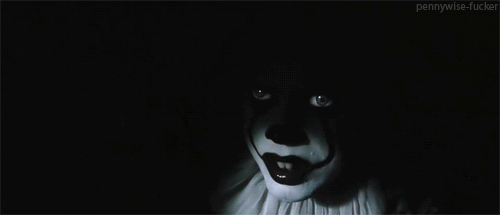
So - which one is hiding in your closet?
(Aside from the queerness your inner 14 year old hasn’t fully unleashed yet like a big bisexual dragon spewing flames of gender-neutralness.)
(Don’t worry, I’m fine.)
Are you a whore for horror? Passionate about the paranormal? Do you want to see a new real ghost story every day? Then you have to follow this blog.
Read this post next!
#babadook#babadook book#haunted book#babadook 2#babadook meaning#babadook monster#based on true story#based on a true story#based on real events#horror#horror film#a quiet place#Horror Movies#the grudge#the conjuring#scary movie#horror movies 2019#horror movies 2014#candyman#the conjuring 2#bogeyman#bogeyman meaning#boogeyman#urban legend#mythical creatures#vampires#werewolves#witches#paranormal evidence#photographic evidence of ghosts
18 notes
·
View notes
Text
Week Five: Big Data Review

I like to think that the concept of innovative art only really reached its peak when the internet came along. I mean, there were people drawing on cave walls and writing with quill feathers and clattering on typewriters a little before that, but it was when the world wide web came to surface that the way we processed media truly changed. As a technology obsessed, sugar gargling millennial, I couldn’t possibly define myself today without a sweet, sweet machine able to give me immediate access to the art form of choice: podcasts.
But let’s, for one very terrifying minute, imagine what it would be like if the internet was plucked away and whatever phone, tablet, or laptop you were reading this from was obsolete. Hell, I’m entirely obsolete. Your collection of cat photos on Facebook, your favorite recipes on Pinterest, your favorite Let’s Play channels-just slipped out of your fingers because seven thieves with seven keys to the internet had something else in mind.
This is the general premise of Ryan Estrada’s first audio drama, the nine episode long Big Data. In this crime caper comedy, the entire world gets thrown into a frenzy when the ultimate source of information and privacy is taken away and we all get to know these thieves personally and decipher why they committed their crime before the internet is gone for good. Hilarity ensues.
Big Data is all around a show about the internet for the internet and has pretty big ambitions as an audio drama despite just how niche and personable the whole project feels. Despite it being the otherwise visual artist Ryan Estrada’s first real attempt at audio drama, at least as far as I’m concerned, Big Data has a certain level of polish that’s noticeable from a distance.
For starters, it’s presentation is pretty solid, namely due to the cast of talented voices working for it. Big Data has the kind of acting that sounds incredibly natural, making listening to it sound similar to peeping in on an actual conversation. This is especially helped by the use of everyday sound effects like buzzing phones and rustling clothes being played over silence that makes everything sound like a recording device was sneaked into someone’s bedroom.
A whole episode sometimes just feels like an uncut piece of improvisation, especially with the only occasional sound transition and long winded conversations taking place in every other moment. For this reason, Big Data mostly consists of very long scenes that are based around roughly two to three characters at a time which is only a fraction of the absolute clusterfuck of people introduced through the series alone.
In terms of innovation, it’s readily apparent as to why I found Big Data to be the crème de la crème for this month’s theme. Big Data is a weird show, bordering at the brink of absurdist at times. The show never goes full Serial Experiments Lain on us, though the concept is just complex enough for a lot of opportunities for creative and downright bizarre conflict. Not really in the abstract sense but more out of the sheer heights its dialogue is willing to peak to get a point across.
To its core, Big Data is a heist story that’s actually based off a real life practice created by something called ICANN. According to Estrada as well as an article by the Huffignton Post in 2014 and a more recent document earlier this year by ICANN itself, the seven keys to the internet holds a pivotal role over the internet. These are mostly measures for security, though Estrada seemed to do what most artists do and draw inspiration from some of the more strange practices of the real world for his own project.
And it doesn’t stop there. There’s also mentions of other real life concepts thrown into the mix, including such things as cyber police, relay calls, and photocopier black boxes that are creatively woven into an otherwise fictional story. Estrada takes the “reality is stranger than fiction” route to heart here which is a road less traveled for many audio drama creators and what he does with these ideas makes for some very one of a kind scenarios.
Big Data could be best described as...big. Everything about it seems to take up space from its thirty minute run time for episodes to its long scenes of dialogue to its combination of varying issues that are embedded into each element of the story from hacking to journalism to media consumption.
Even the setting itself seems to reside somewhere in the middle of other preexisting audio drama, the second episode including in-character commentary from the likes of Greater Boston and Welcome to Night Vale, to name a few.
I don’t know if there’s a widespread podcast multiverse theory that exists anywhere, but a helpful dose of that opening scene and that one mini episode with The Bright Sessions and Ars Paradoxica around the same time never fails to get me grinning. And if Big Data is the center of it all as the result of some sort of combination of the hadron rift and whatever drugs The Meat Blockade universe is on, I would not be that hard pressed to believe it.
Big Data may just be too much of a puzzle for people looking for something a little more straight forward. With a lot of characters to follow who have varying goals and personality quirks to keep up with as well as the broad premise at stake here, Big Data, as the name implies, can be a lot to process in one sitting. And with the long, single takes making up the majority of episodes, there’s a lot of time spent peddling around dialogue that may or may not be relevant or getting any sort of real point across.
Big Data tends to mistake swearing for humor if it doesn’t mistake long and awkward arguments for humor. And there’s at lest one per episode moment where one wonders how many minutes are left of a heated conversation before it wraps up. Not that it doesn’t have its clever and witty moments, though they’re often weighed down by scenes that don’t quite lay out the jokes as quickly as they could.
If the abstract necessity of the internet and an aesthetic that borrows from educational nerdy shows-think the PBS Idea Channel and Wisecrack and the like-is too weird a combination to your liking then the show probably won’t appeal to you in any personal or artistic way. It’s a look and feel that’s very genuine and unique and not a vibe I regularly get from audio dramas that are almost always variations of horror or sci-fi with some type of new scripted comedy every blue moon.
For that reason alone, Big Data is quite the novelty if you’re looking for a slightly more grounded comedic setting that is still rife with drama and action and I personally don’t think there are a enough of those that aren’t just improvisation groups.
In the end of the day, Big Data is a lot like an old and cluttered computer jam-packed with family photos, bookmarked news stories, student films, and whatever software it needs to run an indie game for you-lovingly constructed and planned out though often times messy with a tendency to lag.
It feels like its biting more than it can chew at times and there’s often moments where it seems like things are all being cobbled together more on a desktop than a folder, but it’s all done out of sheer sentimentality and a true love for both audio drama, the internet, and the wackiness of real life manipulated into something very grand and exciting.
Big Data is adventurous and able to take some risks with its kitchen sink of ideas that make for a fast paced and fun exploration riddled with some pretty memorable hi-jinks and characters you grow to like pretty quickly. Even if the taste itself was pretty small with only nine episodes to take in, if you don’t include mini episodes, it was at least as big a punch as Big Data should be.
24 notes
·
View notes
Photo
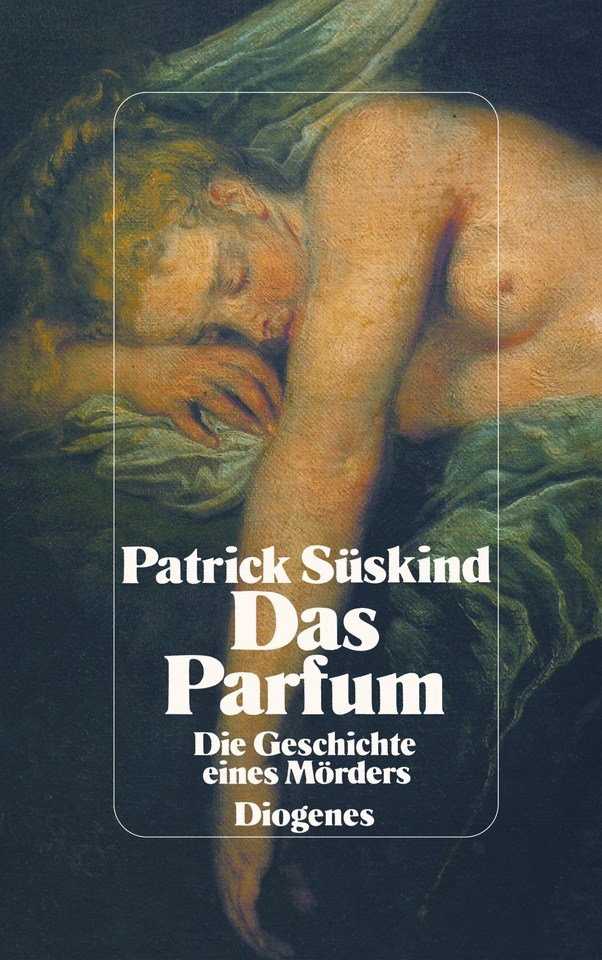
(via parfum_sueskind_cover_diogenes.jpg (213×340))
Notes:
When the labour pains began, Grenouille’s mother was standing at a fish stall in the rue aux Fers, scalingWhiting that she had just gutted. The fish, ostensibly taken that very morning from the Seine, already stank so vilely that the smell masked the odour of corpses. Grenouille’s mother, however, perceived the odour neither of the fish nor the corpses, for her sense of smell had bee utterly dulled, besides which her belly hurt and the pain deadened all susceptibility to sensate impressions. She only wanted the pain to stop, she wanted to put this revolting birth behind her as quickly as possible. It was her filth. She had effected all the others here at the fish booth, and all had been stillbirths, or semi-stillbirths, for the bloody meat that emerged had not differed greatly from the fish guts that lay there already, nor had lived much longer, and by evening the whole mess had been carted off to the graveyard or down to the river. [...] Grenouille’s mother wished that it was already over. And when the final contractions began, she squatted under the table and there gave birth like she had done 4 times before, and cut the new born things umbilical cord with her gutting knife. But then, on account of the heat and the stench, whcih she did not perceive as such but only as an unbearable, numbing something - like a field of lilies or a small room filled with too many narcissi - she grew faint, toppled to one side fell out from under the table to the street, and lay there knife in hand -pg 4
...he smelled it more precisely than many people could see it, for his perception was perception after the fact and thus of a higher order: an essence, a spirit of what had been, something undisturbed by the everyday accidents of the moment, like noise, glare, or the nauseating press of living human beings. -pg 36
It was a strange perfume that Grenouille created that day. there had never before been a stranger one on earth. It did not smell like a scent, but like a human being who gives off scent. If one had smelled this perfume in a dark room, one would have thought a second person was standing there. And if a human being, who smelled like a human being, had applied it, that person would have seemed to have the smell of two people, or, worse still, to be a monstrous double creature, like some figure that you can no longer clearly pinpoint because it looks blurred and out of focus, like something at the bottom of a lake beneath the shiver of waves. -pg 155
The blossoms were were emptied out in the workshop by the basketful into massive but lightweight and fragrant piles. Meanwhile, in a large cauldron Druot melted pork lard and beef tallow to make a creamy soup into which he pitched shovels of fresh blossoms, [...] They lay on the surface for a moment, like eyes facing instant death, and lost all colour the moment the spatula pushed them down into the warm, oily embrace. And at almost the same moment they wilted and withered, and death apparently came so rapidly upon them that they had no chouce but to exhale their last fragrant sighs into the very medium that drowned them; for - and Grenouille observed this with indescribable fascination - the more blossoms he stirred under into the cauldron, the sweeter the scent of the oil. And it was not that the dead blossoms continued to give off scent there in the oil - no the oil itself had appropriated the scent of the blossoms. Now and then the soup got too think, and they had to pour it quickly through a sieve, freeing it of macerated cadavers to make room for fresh blossoms. -pg 180
[Cold enfleurage] The souls of these noblest of blossoms could not be simply ripped from them, they had to be methodically coaxed away, In a special impregnating room, the flowers were strewn on glass plates smeared with cool oil, or wrapped in oil-soaked clothes; there they would die slowly in their sleep. It took three or four days for them to wither and exhale their scent into the adhering oil. Then they were carefully plucked off and new blossoms spread out. - pg 186
[thinking about using the last of his perfume] and then he saw, smelled, how his beloved scent would vanish in the air, irrevocably, for ever. It would be a long slow death, a kind of suffocation in reverse, an agonising gradual self-evaporation into the wretched world. -pg 198
She had disappeared behind a hedge. And it took about two heartbeats longer than he expected before she emerged again- and he was frightened to death, for during those two heartbeats he thought he had lost her forever. -pg 210
http://www.westshore.edu/personal/mwnagle/Wciv/PerfumeAnalysis.htm :
Addressing the question of literary influences, Suskind claims to be a blissfully ignorant epigone whose memory is so poor that he barely remembers what he has read, much less who wrote it, which, it seems to him, is a fortunate handicap for a creative writer since it frees him from the anxiety of influence and creates an uncomplicated relation to plagiarism, without which, he paradoxically insists, nothing original can be written.
Suskind projects his concern with personal identity and literary persona onto the themes and characters of Das Parfum. Set in eighteenth-century France, Das Parfum tells the story of Jean-Baptiste Grenouille, a physically and emotionally abused orphan whose supernatural sense of smell guides him in a perverse search for the lost origin of his identity.
-deals with plagiarism and the enlightenment trope of individual autonomy-
Presumably, the implication that the writing subject of a novel like Das Parfum has been swallowed by the black hole of postmodern ecriture, only to re-emerge as an irrationally destructive and cynical parasite, is too frightening to contemplate in a culture clinging to the shreds of an uncohesive collective identity.
More than a parasitic parody that feeds on dead poets, Das Parfum can be productively interpreted as an enactment of literary anamnesia that contributes to a working through of complex psychic and social issues.
Grenouille's coldly rational plundering of the human body to create an ideal perfume is undeniably an allegory of the "murder" that instrumental reason commits on the objects of its reifying analysis
In the wake of the Enlightenment's demand for self-legislating subjectivity, so Bloom argues, the Romantic poet could no longer unquestioningly imitate previous models to develop a literary identity. Thus Bloom casts the Romantic poet as a version of the oedipal son who contests the father's priority, not in direct conflict, but by a defensive repression of the precursor's voice. To achieve authentic identity, the artistic imagination must define itself by rejecting anterior discourse and narcissistically seeking its own voice, constituting an ego by love of its own figurations.
For the Bloomian poet the literary equivalent of this narcissistic symbiosis is an initial affiliation with a central precursor: "the strong poet's love of his poetry, as itself, must exclude the reality of all other poetry, except what cannot be excluded, the initial identification with the poetry of the precursor." Thus, "the mystery of poetic style" is reduced to the "mystery of narcissism"
The result of this imaginative narcissism is a creative melancholia that promotes a literary amnesia.
Because originality becomes the post-Enlightenment law of creativity, Bloom argues that writers in the Romantic tradition (which he interprets broadly to include most canonical literature since the late eighteenth century) must refuse to mourn the loss of the idealized precursor by a process of self-defensive repression. "Poets," Bloom contends, "do not exist to accept griefs" (Yeats 5). Inevitably, such repression leads to an enormous diminishment of the creative ego, making Romantic poetry "the result of a more prodigious sublimation of imagination than Western poetry from Homer through Milton had to undergo" (Anxiety 125). As Freud cautioned in his essay "Trauer und Melancholie," a refusal to mourn causes a depressive melancholia, which can only be cured by a process of grieving called Trauerarbeit. What the melancholic must work through and overcome is the narcissistic fantasy of omnipotent mastery over the lost object. Absorbed into the unconscious, the unmourned object of love poisons the ego, whose reproaches against the lost object become self-reproaches and create symptoms of dejection, an inability to construct new idealizations, and above all a diminishment of self-esteem.
Undoing melancholic repression, citational play creates a discourse of mourning that undergirds and sustains both the philosophical and aesthetic practices of a postmodern culture confronted with the disintegration of Enlightenment master codes of unity and totalization.
- - - - - -
Indeed, one of the novel's most notable but least analyzed achievements is its expansion of the mad genius topos of Romanticism into a literary case study of the psychopathic mind. As a serial killer, Grenouille conforms to a profile established by current clinical research linking the narcissistic borderline personality with homicidal psychopaths. Citing early childhood traumas of abandonment and abuse as significant factors in criminal pathology, recent studies postulate that such traumatic events prevent the formation of stable self-structure, leading to the fusion of idealized objects with an unmodified grandiose self. In adult life the earlier developmental failure to differentiate the primitive grandiose self from idealized objects results in a repeated failure to identify with social norms, especially moral codes, which leads to antisocial acts expressing unconscious abandonment rage
E. T. A. Hoffmann's tale Das Fraulein von Scuderi -contains Cardillac who’s mother while pregnant with him desired a man only due to the beautiful gems he offered her, when she grasped them he died and her hysteria was transferred to the foetus triggering the formation of a creative imagination obsessed with fetishized works of art whose violent retrieval compensates a primal narcissistic wound. Cardillac went on to become a master jeweller who would Oedipally create beautiful jewellery/works of art precisely so that he can take them back: The crucial element in Hoffmann's portrait of the artist is a compensatory mechanism. [maybe u were on to something with pygmaliolism]
Parodying the Enlightenment conception of Bildung as a progression toward an autonomous ego, Grenouille's formative relationships promote only regressions to primitive ego states in which compensatory fantasies of infantile omnipotence replace the mature resolution of dependency issues.
The artist creates as a result of a deeply rooted need to restore structural deficits in the core self. On this point Suskind's text is unambiguous: To tame and structure his incoherent internal universe, Grenouille must assimilate an idealized feminine scent. His most urgent need is to reinscribe a feeling of symbiotic unity into his disintegrating self-structure.
In such an allegory of creativity, regression to an antecedent stage emerges as a psychopoetic metaphor consistent with the Bloomian notion of the creative genius who unconsciously reactivates a primal affiliation with a central precursor and imaginatively regresses to a state of primary narcissism. Although Bloom seems unaware of it, his idea finds support in the aesthetics of object relations theory, which shifts the conception of creativity from classical Freudian sublimation to a compensatory idealization of the self. In post-Freudian psychoanalysis it has long been the consensus that artists work to restore a lost beauty and perfection that was once their own. By inventing an idealized object onto which primitive fantasies of omnipotence are projected, artists enact a mourning of the lost omnipotence of the primitive grandiose self (Layton and Schapiro 23-36). Especially artists who exhibit an exaggerated concern with wholeness and ideal beauty are unconsciously attempting to restore the blissful perfection of archaic narcissism associated with the idealized self-object. Suskind and Hoffmann, however, who depict the psychic abnormalities that often underlie aesthetic idealism, parody the artistic fetishism of Romantic idealism. Rather than disavowing the pain of a primal wound by regressing to the imaginary perfection of primary narcissism, their fantasies recreate sites of emotional injury in search of psychic insight and reparation.
Without such pre-oedipal triangulation, the child remains suspended in a regressed state of primary narcissism. In Das Parfum the image used to convey this emotional stunting is the tick, a parasite that withdraws into itself and survives on a single drop of blood for years. Like the tick, Grenouille requires only a minimum of nutriments, especially in the psychological sense
In this metaphorical description of the regressive borderline personality the psychoanalytic significance of Grenouille's name emerges: Grenouille (French for frog) is Suskind's metaphor for the liminality and failure of identification that characterize the narcissistic condition.
Unlike Freud, whose patients suffered neurotic symptoms thought to result from unresolved oedipal guilt (like the hysterical reaction of Cardillac's mother to the intruder),contemporary psychoanalysts typically confront a depression signifying wounds to a primitive ego preceding the Oedipus. According to Kristeva, this profound sadness, the melancholia of the borderline personality, is perceived by its sufferer, as a "fundamental lack," or "congenital deficiency"
- - - - -
As the organizing allegory of a postmodern Kunstlerroman, the metaphor of perfume is particularly well chosen, for what would be a more appropriate trope for the self-deconstructing text than a composite mixture distilled from canonical essences, a parodic blend of the tradition's master codes and most seductive stylistic voices?
As the blatant citationality of Das Parfum shows, in postmodern kenosis the creative psyche is diminished not to clear space for a narcissistic genius who represses fetishized precursor texts but to dissolve the fantasy of omnipotence and redefine imaginative subjectivity as the fluid space of ecriture where singular authorial identity disappears and its repressed other, the citation, emerges in a hybrid intertextual construct. Tropingmultiple precursors, Suskind's pastiche foregrounds the creative process as an evacuation of literary identity and its reconstitution as a plurality of voices.
In postmodern pastiche, on the other hand, the myth of singular voice fostered by the Enlightenment ideal of individual autonomy is abandoned and the dead ancestors return in citational clusters.
In a similar fashion, the novel's concluding image of self-extinction mirrors the postmodern kenosis of subjectivity. After achieving his highest ambition of being loved unconditionally and then realizing that this love is only a manufactured illusion, Grenouille commits suicide by drenching himself with his ideal perfume and throwing himself to a crowd of riffraff, who tear him to pieces and consume his body in an act of "love." The corporeal sacrifice and redemptive reincorporation suggested by this cannibalization is amplified by a cluster of allusions including, most obviously, the Christian crucifixion, as well as the Euripidean dismemberment of Pentheus by the Dionysian maenads, the latter representing the defeat of the rational ego in both the classical text and its postmodern adaptation. Additionally, the image resonates with Kleist's Penthesilea, which also ends with the devouring of a wounded hero (Achilles) in an orally sadistic Liebestod. Reinhabiting ancient and sacred myths, these images of ingestion, communion, and redemption converge with the psychic necessity of introjective Trauerarbeit as a cure for wounded cultural identity. Grenouille's Christian name, Jean-Baptiste, further reinforces the interpretation: John the Baptist preached the gospel of redemption achieved by an identificatory communion performed in the name of the Father.
He refers to these regressive reveries as vintage wines, which he addictively imbibes to fortify himself against the painful emptiness of his depleted psyche. Sometimes these scented memories are called "books," which his servants retrieve from a "great library" implying that he, the aesthete, intoxicates himself with an excessive consumption of literary art. Ironically, despite this retreat from reality into the inner sanctum of his imagination, he is unable to defend himself against external influences, least of all from painful memories of rejection and abuse, which return in the scented memoirs he obsessively peruses. Similarly, the return of repressed Romantic and Symbolist texts is so pervasive in these chapters that many passages seem to consist of almost nothing but blatant plagiarizations (Ryan 399). Thus the aesthete's narcissistic fantasy of a self-enclosing realm is defeated by an underlying web of citations, commenting parodically on the perverse impossibility of self-origination.
Rather than repressing the ancestral voice blocking the epigone's access to some imagined Ursprache of poetic language, the postmodern imagination liberates itself from the narcissistic delusion of originality, converting creative anxiety into intertextual productivity. Thus, the postmodern writer, no longer the mythic, self-aggrandizing genius, is restored to the status of virtuoso, a term that in the premodern era signified a collector of art and highly skilled player. This is, in a productive sense, what the writing subject appears to become in the intertextual artistry that distinguishes Das Parfum as an allegory of postmodern creativity.
see: bauldilaire
0 notes
Text
Art F City: This Week’s Must-See Art Events: R&B Diva to Save Distant Brown Dwarf Star
Much like Paddy’s experience of the Whitney Biennial, New York’s art scene this week is dominated by the political with a healthy smattering of painterly painting, ubiquitous identity politics, and the unapologetically weird.
Highlights include a talk about “the intersectional self” at the 8th Floor featuring Genesis P-Orridge on Thursday, followed by a solo show from Dona Nelson at Thomas Erben Gallery. We’re looking forward to Ernesto Burgos’ work at Kate Werble Gallery (think ab-ex in 3D) on Friday night and some afro-futurist cyberpunk world-building by E. Jane at American Medium on Saturday. If you need a moment of zen before the work week starts, head to E.S.P. TV’s closing reception at Pioneer Works on Sunday—you can join them on a corporate retreat, complete with a self-help guru.
T
W
T
F
S
S
Tue
Ouchi Gallery
170 Tillary Street
Brooklyn, NY
6:00 p.m. - 10:00 p.m. Website
sato, The”U"zing, and TOM●KA
DUMBO’s Ouchi Gallery has a unique curatorial program, in which international artists exhibit in a domestic-like space. There’s a particular focus on art from Japan, so it’s a great spot for introductions to artists who are underknown to American audiences.
This week, they’re opening three projects. These include Kawaii Gaze by Tomoka (stylized TOM●KA), LOVE & PEACE & HAPPY by sato, and MEGUMI-naked 2016.8.23 by The”U”zing (Takeshi Nakata). I’m especially looking forward to The”U”Zing’s work. Nakata has a congenital condition that leaves him with limited mobility. Despite this, he’s made paintings, digital art, and even sculptures depending on his range of motion at the time and studio assistants.
Wed
Con Artist Collective
119 Ludlow Street
New Yprk, NY
7:00 p.m. -11:00 p.m.Website
The Red Hats
Con Artist collective is launching their own one-of-a-kind “MAGA” hats designed by member artists. If you had told us back when the ironic trucker hat trend died with Von Dutch that Donald Trump would bring it back (via reactionary appropriation) we would’ve thought you were crazy. We live in strange times indeed.
Thu
The 8th Floor
17 W 17th St
New York, NY
6:00 p.m. - 8:00 p.m. Website
Conversation: Genesis P-Orridge, Lia Gangitano and Kris Grey; The Intersectional Self
We can’t emphasize enough how much we enjoy hearing Genesis P-Orridge speak. (S/he spoke as part of our Strange Genitals program, in which s/he was also an exhibiting artist).
Here, P-Orridge will be joined by Participant Inc. founder Lia Gangitano and queer artist/activist Kris Grey in conversation. This ought to be good!
Thomas Erben Gallery
526 West 26 Street
New York, NY
6:00 p.m. - 8:30 p.m.Website
Dona Nelson: models stand close to the paintings
Dona Nelson’s decades-long painting career has been characterized by experimentation. The downside of this is that her work is sometimes a little uneven. The upside is constant innovation—it seems this show will further Nelson’s approach to considering paintings as 3D objects in installation-like environments.
Inspired by a 1951 Vogue photoshoot, in which models stood in front of Jackson Pollock works, the show’s title “models stand close to paintings” fittingly references both the shoot and Nelson’s strengths as an artist. As it happens, Nelson’s work shines brightest when mashing-up abstraction and figuration.
Fri
Kate Werble Gallery
83 Vandam St.
New York, NY
6:00 p.m. - 8:00 p.m.Website
Ernesto Burgos: One Thing After Another
Just over the weekend, a friend and I were talking about how rarely abstract sculpture excites either of us anymore. Then I saw this event listing, and remembered how Ernesto Burgos’ work throws a wrench in this observation. His painterly sculptures have such a sense of movement and nuanced understanding of color they must be seen in person.
Selena Gallery
37 Troutman Street
Brooklyn, NY
7:00 p.m. - 10:00 p.m. Website
"A beige-looking blob that resembles nightmares"
Curator Philip von Zweck gets this week’s award for strangest exhibition conceit. The show takes its title from a seitan recipe’s “aesthetic notation to indicate a correctly executed step.”
The artist’s here all deal with notions of ephemerality and chance v.s. deliberate processes. What will this show look like? We aren’t really sure, but hopefully more appetizing than work-in-progress vegan wheat-meat.
Artists: Erin Washington, Amanda Ross-Ho, and Paola Cabal
Sat
American Medium
424 Gates Ave
Brooklyn, NY
6:00 p.m. - 10:00 p.m.Website
E. Jane: Lavendra
Welcome to “Lavendra”, a lonely brown dwarf star. This is the sci-fi setting of E. Jane’s narrative installation, in which the Black Diva of 90s R&B iconography is the protagonist.
The multi-media body of work includes video, sculptural collage, and a purple lighting scheme. It sounds crazy good.
Sun
Derfner Judaica Museum at Hebrew Home at Riverdale
5901 Palisade Ave
The Bronx, NY
1:30 p.m. - 3:00 p.m. Website
Across Divides: Borders and Boundaries in Contemporary Art
Given the current political climate, this show about borders sounds timely. But just like many of today’s geopolitical conflicts, its concept is partly rooted in ancient religious traditions. We don’t know any of the artists in this show, but tracing our contemporary idea of borders to their roots in the archaic (but oddly enduring) “us v.s. them” rhetoric of religious scripts is interesting. And speaking of crossing borders, we’re always up for an excuse to go see art in the Bronx.
Artists: Andi LaVine Arnovitz, Tova Beck-Friedman, Siona Benjamin, Ken Goldman, Tamar Hirschl, Sara Klar, Lea Laukstein, David Moss, Laura Murlender, K. Flo Razowsky, Andrea Robbins and Max Becher, Ben Schachter, Ruth Schreiber, Angela Strassheim, Ahuva Winslow, Pavel Wolberg
Curated by Reba Wulkan
Pioneer Works
159 Pioneer St.
Brooklyn, NY
7:00 p.m. Website
Closing Reception: Lifestyle Guru
For the past few weeks, collective E.S.P. TV’s WORK has moved Pioneer Work’s real office operations to a fake office television set. This interactive installation offers visitors and staff the opportunity to appear in a fake reality t.v. show.
Appropriately, this office-themed project is concluding with a corporate retreat, complete with a lifestyle guru (led by artist Jill Kroesen). Other activities include a play by Ian Hatcher and a multimedia performance by Ben Vida.
from Art F City http://ift.tt/2nLCpUY
via IFTTT
0 notes
Text
((Tag dump.))
#Soup Mun Speaks; OOC Post#Stylishly Out of Style; Gyro Wardrobe#Songs To Invent To; Gyro Music#Let's Not Talk About The Cogs...; Toon Verse#But These Are My Regular Clothes!; Starchy Wardrobe#Jollywood Jams; Starchy Music#Old School Kicks; Sawyer Wardrobe#Fuzz and Distortion; Sawyer Music#Memorabilia; Sawyer Likes#Reality is Strange; Three Meat Aesthetic#Fresh Tortillas; Three Meat Wardrobe#Spark of Curiosity; Three Meat Likes#Burrito Ballads; Three Meat Music#Dapper Disguises; Gourdon Wardrobe#The Disharmonic Orchestra; Gourdon Music
1 note
·
View note